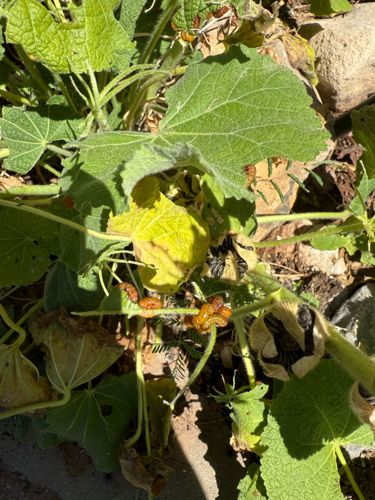Squash Bug Nymphs
Scientific Name: Anasa tristis
Order & Family: Hemiptera, Coreidae
Size: Nymphs vary in size from very small (1-2 mm) after hatching to about 1 cm before becoming adults. Adults are typically 1.2 to 1.9 cm long.

Natural Habitat
Gardens, agricultural fields, particularly wherever cucurbit plants (squash, pumpkins, melons, cucumbers) are grown.
Diet & Feeding
Herbivorous. These nymphs feed exclusively on the sap of cucurbit plants by piercing the plant tissue with their straw-like mouthparts (proboscis) and sucking out the sap.
Behavior Patterns
Squash bug nymphs are gregarious, often found clustered together on the undersides of leaves or on stems. They molt several times (instars) before reaching adulthood. They are active during the day and can often be seen feeding. When disturbed, they may emit an unpleasant odor.
Risks & Benefits
Risks: Squash bugs are significant pests of cucurbit crops. Their feeding causes yellow spots on leaves that eventually turn brown and crispy, a condition known as 'Anasa wilt' or 'squash bug wilt.' Severe infestations can lead to wilting, stunted growth, and death of the plant, resulting in significant crop loss for gardeners and farmers. Benefits: None to humans or ecosystems; they are considered purely detrimental pests in agriculture.
Identified on: 9/14/2025